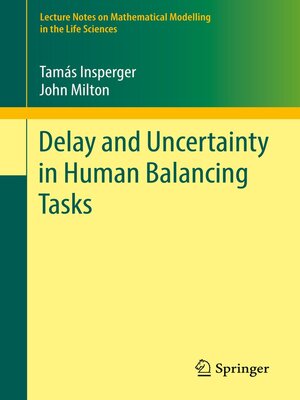Delay and Uncertainty in Human Balancing Tasks
ebook ∣ Lecture Notes on Mathematical Modelling in the Life Sciences
By Tamás Insperger

Sign up to save your library
With an OverDrive account, you can save your favorite libraries for at-a-glance information about availability. Find out more about OverDrive accounts.
Find this title in Libby, the library reading app by OverDrive.



Search for a digital library with this title
Title found at these libraries:
| Library Name | Distance |
|---|---|
| Loading... |
This book demonstrates how delay differential equations (DDEs) can be used to compliment the laboratory investigation of human balancing tasks. This approach is made accessible to non-specialists by comparing mathematical predictions and experimental observations. For example, the observation that a longer pole is easier to balance on a fingertip than a shorter one demonstrates the essential role played by a time delay in the balance control mechanism. Another balancing task considered is postural sway during quiet standing.
With the inverted pendulum as the driver and the feedback control depending on state variables or on an internal model, the feedback can be identified by determining a critical pendulum length and/or a critical delay. This approach is used to identify the nature of the feedback for the pole balancing and postural sway examples. Motivated by the question of how the nervous system deals with these feedback control challenges, there is a discussion of ''microchaotic'' fluctuations in balance control and how robust control can be achieved in the face of uncertainties in the estimation of control parameters. The final chapter suggests some topics for future research.
Each chapter includes an abstract and a point-by-point summary of the main concepts that have been established. A particularly useful numerical integration method for the DDEs that arise in balance control is semi-discretization. This method is described and a MATLAB template is provided.
This book will be a useful source for anyone studying balance in humans, other bipedal organisms and humanoid robots. Much of the material has been used by the authors to teach senior undergraduates in computational neuroscience and students in bio-systems, biomedical, mechanical and neural engineering.







